In 2014, American conductor, pianist, and composer Leonard Slatkin wrote Endgames, a work that would focus on the End Instruments, the instruments that sit at the ends of their respective sections in the orchestra, the highs and lows of the woodwinds: the piccolo, alto flute, English horn, E flat clarinet, bass clarinet, and contrabassoon.
They’re used for special sounds but are rarely the featured instrument. Slatkin gives them the opportunity to show off their melodic, lyrical, and playful sides. The descriptions below will help you identify what you’re hearing.
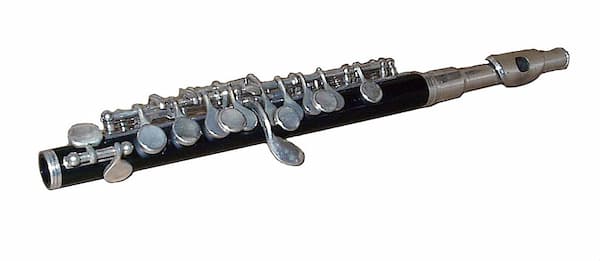
The Piccolo
The piccolo is the smallest member of the flute family – half the size of a regular concert flute. It produces a high-piercing sound, an octave above the concert flute sound. Beethoven used it in his Symphony No. 5 but neither Haydn nor Mozart ever wrote for it in their symphonies.
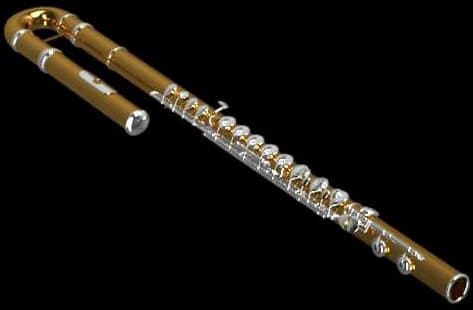
Alto Flute
The alto flute, on the other hand, is larger than the standard concert flute. It’s so long that the head joint is usually doubled back on the instrument to help the player reach the keys. The keys on the alto flute were standardized in the 1850s when Theobold Boehm developed his keywork for it. The sound of the alto flute is described as rich and mellow.
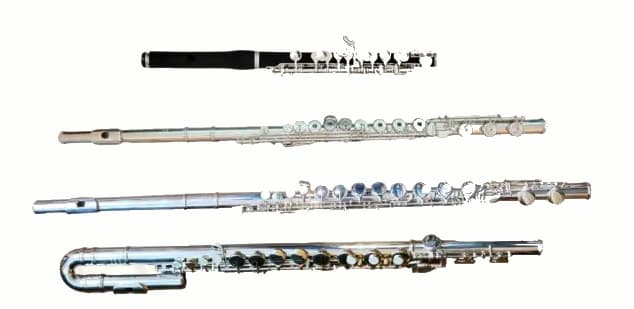
Piccolo (top), Concert Flute (middle) and Straight and Doubled-Back Alto Flutes (bottom)
The English Horn, also known as the Cor Anglais, is longer than its more standard counterpoint, the Oboe. Unlike the Oboe, which has a flaring bell, the Cor Anglais has a pear-shaped bell called the Liebesfuß. This ‘love foot’ is used on only a few instruments, such as the Oboe d’Amore, the Cor Anglais, and the Heckelphone, to affect the timbre of the instrument – it gives a sweet tone to the sound, hence the ‘love’ in the name.
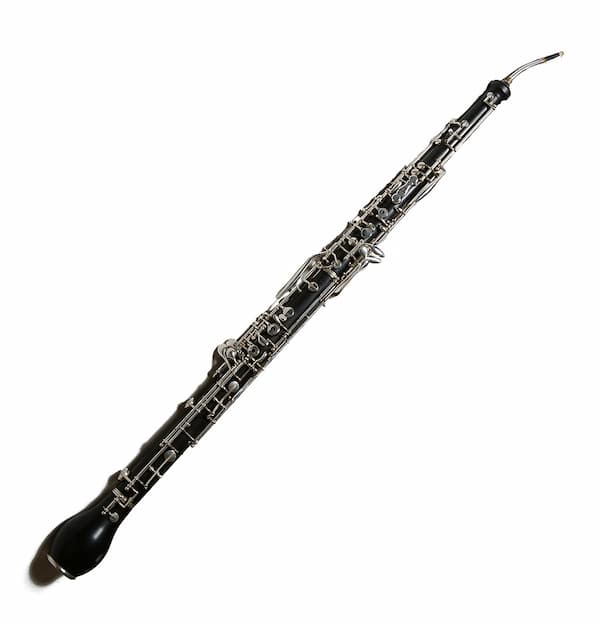
English Horn / Cor Anglais
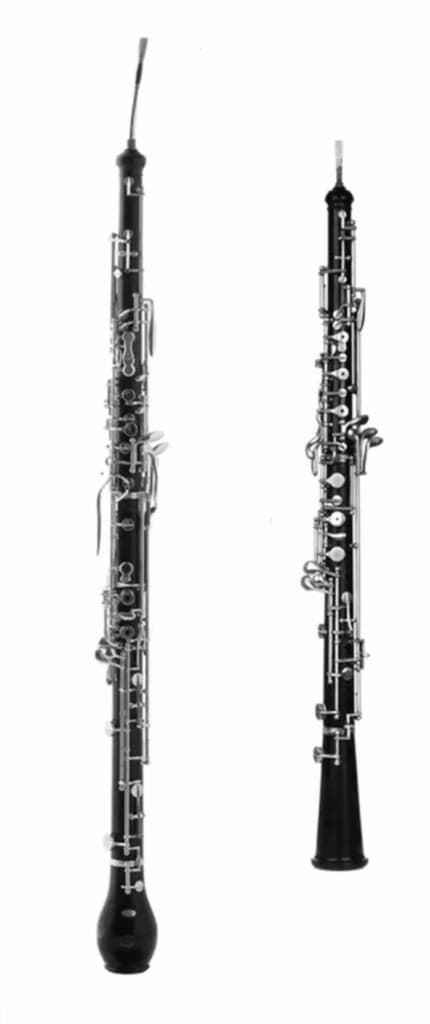
English Horn (left) and Oboe (right)
The normal Clarinet is in Bb Clarinet, and its smaller sibling is the Eb Clarinet. It’s the Clarinet equivalent of the Piccolo for the Flutes, with its high register enabling it to play music that would be too high for a normal Clarinet. There’s little written for it as a solo instrument, but it has been used to great effect in orchestral writing from Berlioz to Mahler and beyond.

E flat Clarinet
The Bass Clarinet plays an octave lower than the normal B flat Clarinet and has its body modified with a curved metal neck and curved metal bell. Unlike the Clarinet, which is held in the hands, the Bass Clarinet either needs to be supported on a neck strap or uses a floor peg to support the weight. It started to appear in orchestral writing in the mid–19th century and has had role in operas since the 1830s.
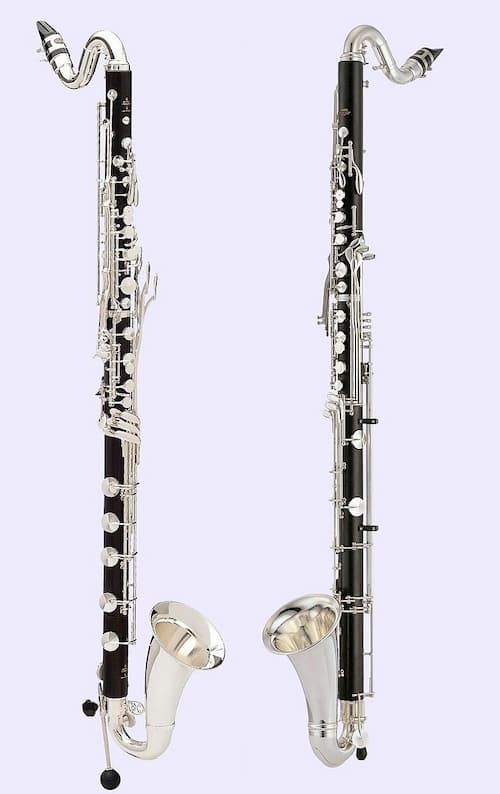
Bass clarinets made by Buffet Crampon (left) and Yamaha (right)
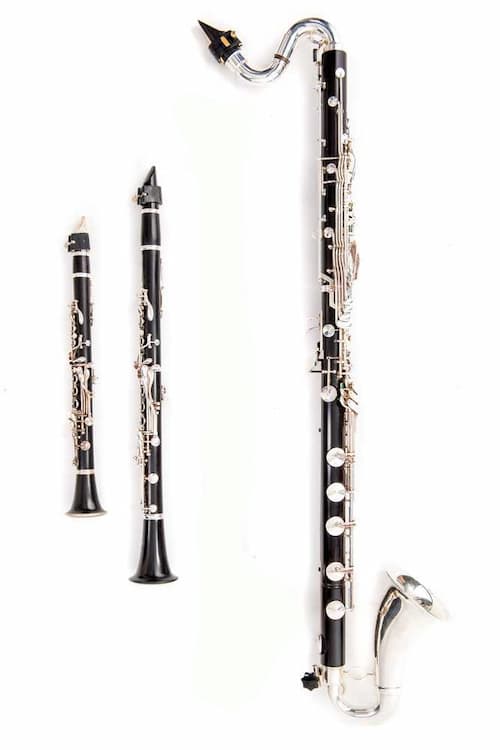
E flat (left), B flat (middle), and Bass (left) clarinets
As you might be able to tell from the name, the Contrabassoon is the bass version of the Bassoon. Like the other low-voice instruments, the Contrabassoon is doubled back on itself so it can fit the player’s hands. The instrument is twice as long as the Bassoon and is so heavy that it sits on an end pin and is not held by a neck strap.

Contrabassoon
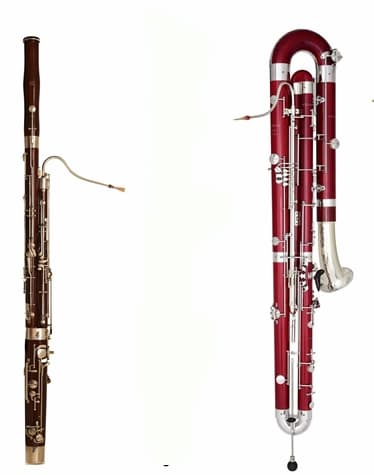
Bassoon and Contrabassoon
Listen for how the composer brings out the sound of each instrument, starting with the Cor Anglais. Each instrument has a chance to show off its particular timbre and now you can identify them as well.
Leonard Slatkin: Endgames (Jeffery Zook, piccolo; Sharon Sparrow, alto flute; Monica Fosnaugh, cor anglais; Laurence Liberson, E flat clarinet; Shannon Orme, bass clarinet; Marcus Schoon, contrabassoon; Detroit Symphony Orchestra; Leonard Slatkin, cond.)
If you want to see if your guesses were right and how the instruments are played, see Slatkin conducting the Detroit Symphony in his work.
Leonard Slatkin: Endgames
By selecting out these special instruments, Slatkin has given us a chance to appreciate just what they contribute to orchestral performances.
For more of the best in classical music, sign up for our E-Newsletter



